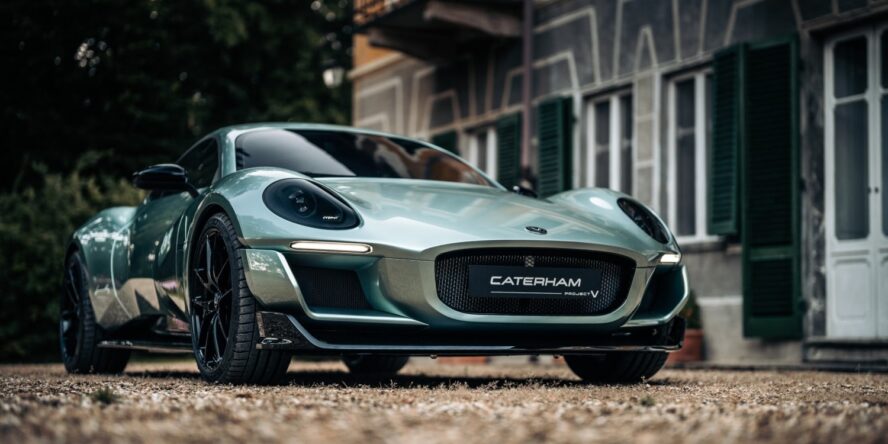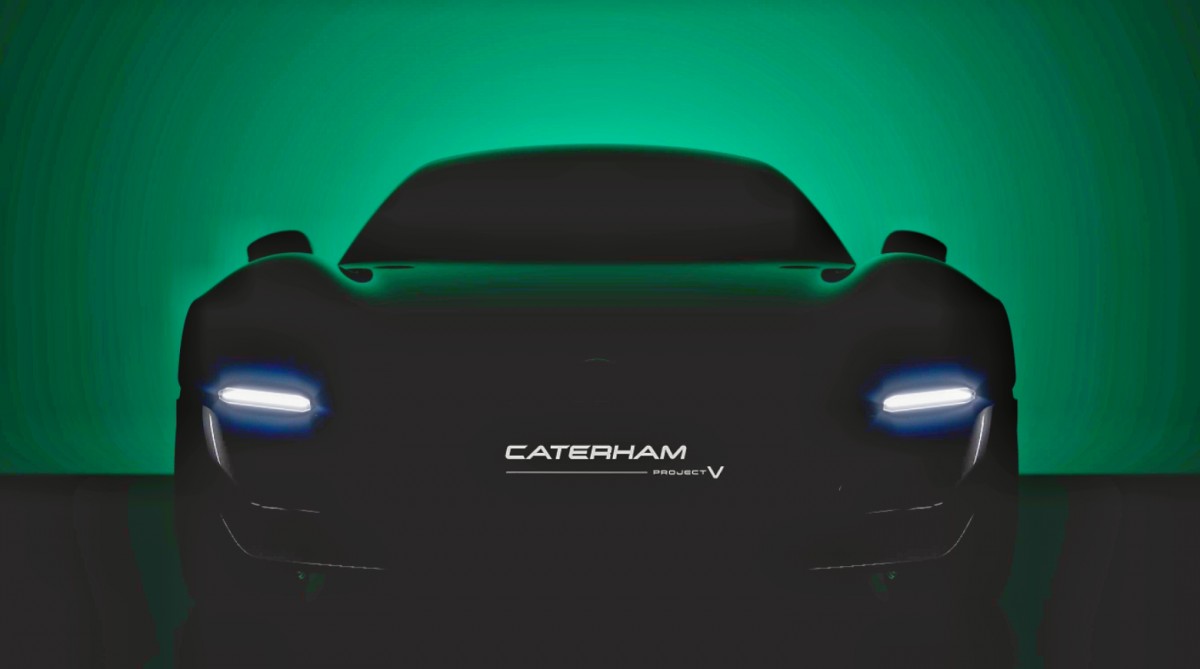Caterham, the renowned British sports car manufacturer, has taken the automotive world by storm with the introduction of their latest creation, Project V. This groundbreaking concept car represents a significant departure from Caterham’s traditional offerings, showcasing their commitment to embracing electric mobility. Simultaneously, the company has hinted at a potential market launch for the production version, set to arrive in late 2025 or early 2026, with an enticing price tag below £80,000.
Unlike the previously unveiled electric variant of the iconic Caterham Seven, which was initially conceptualized as a conversion, Project V has been meticulously designed as a purpose-built electric vehicle. This ambitious endeavor deviates from Caterham’s signature Seven design, opting for a more conventional sports coupe appearance while retaining its distinctive allure.
Weighing in at a mere 1,190 kilograms, this electric coupe boasts a 2+1 seating arrangement (with an optional 2+2 configuration) and draws power from a rear-axle-mounted 200 kW electric motor. Complementing the motor is a 55 kWh battery pack, facilitating an estimated WLTP range of 400 kilometers. Caterham’s ambitious performance targets include an acceleration time of under 4.5 seconds for the 0 to 100 km/h sprint and a top speed of 230 km/h. Although a larger battery with the potential for a second high-powered electric motor was considered, weight considerations led to this idea being shelved for the time being.
Caterham has refrained from divulging detailed information about the battery’s construction, such as cell formats or chemistry. However, they have emphasized the presence of an “advanced thermal management” system, enabling rapid charging capabilities. With a compatible DC charger delivering at least 150 kW, the battery can be charged from 20 to 80 percent in just 15 minutes, boasting an average charging power of 132 kW within that specific time frame.
To ensure weight reduction without compromising structural integrity, the study incorporates a composite chassis crafted from a combination of aluminum and carbon fiber. While the target weight of under 1.2 tonnes is specified for the 2+1 seater variant, Caterham has yet to disclose specific details regarding the 2+2 configuration and any design differences that may accompany it.
Responsible for the captivating aesthetics of Project V is Anthony Jannarelly, Caterham’s newly appointed chief designer. The company enlisted the expertise of Italdesign to bring Jannarelly’s vision to life, resulting in a design that balances artistic flair with practical considerations. Bob Laishley, CEO of Caterham Cars and COO of the recently formed electric division, Caterham EVo, assures enthusiasts that Project V transcends the realm of mere concept or design study. The engineering and production feasibility have been integral components of the development process, ensuring the vehicle’s viability. Laishley emphasizes that any electric Caterham, regardless of its shape or size, must remain true to the company’s defining principles of being lightweight, uncomplicated, and providing an unparalleled driving experience—a testament to their DNA.
During the presentation of the electric Seven technology demonstrator, Caterham expressed their intent to commence production of the electric Seven once future battery technologies mature. However, regarding Project V, Laishley confidently suggests that the vehicle could hit the market towards the latter part of 2025 or early 2026, priced below £80,000. Nevertheless, this timeline and pricing are contingent upon further developmental phases and the attainment of requisite technical capabilities, ensuring that Caterham maintains their unwavering commitment to excellence.













